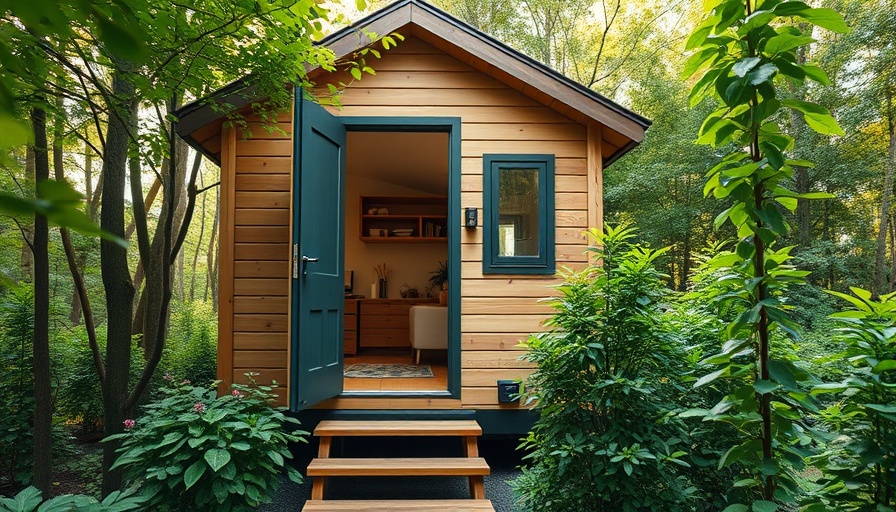
Understanding the Tiny Home Trend in Michigan
Tiny homes have gained a lot of popularity over the past few years. They appeal to many people, especially those looking for a simpler lifestyle. However, for homeowners in southeastern Michigan, it's essential to weigh all the pros and cons. In comparison to traditional homes, tiny houses offer a unique lifestyle choice but come with their own set of challenges and considerations.
Affordable Living: The Draw of Tiny Homes
One of the biggest draws of tiny homes is their affordability. Prices can range from $20,000 to $80,000, making them an attractive option for first-time buyers or those looking to downsize. In contrast, purchasing a traditional home in southeast Michigan averages around $314,250, which can be intimidating for many. This affordability can lead aspiring homeowners to see tiny homes as a pathway to property ownership.
The Financial Insight: Long-term Investment
When it comes to long-term investment, traditional homes generally hold more potential for appreciation. In markets like Michigan, where real estate is projected to grow consistently, traditional houses tend to contribute positively to an individual's portfolio. However, tiny homes often don’t appreciate in value the same way; they act more like vehicles—depreciating over time unless you own the land they're on. For serious investors, this distinction can make a big difference.
Maintenance Costs: What to Expect
One of the benefits of tiny homes is the lower maintenance costs. Fewer square feet mean lower utility bills and upkeep. For Michiganders, this can mean extra savings in the colder months, especially with energy-efficient options like solar panels gaining traction. On the other hand, traditional homes, while requiring more maintenance, often have easier repairs due to the familiarity of standard materials and systems within the community.
Living Comfortably: Finding Your Space
Tiny homes can provide an invigorating change of pace from traditional living. They promote a minimalist lifestyle, which suits many remote workers and retirees, allowing them to focus on experiences rather than possessions. However, space can become a limitation for families or individuals requiring more room. It's crucial for anyone considering a tiny home to evaluate their lifestyle needs thoroughly.
Conclusion: Making the Right Choice for You
The decision between tiny and traditional homes ultimately comes down to your lifestyle, budget, and investment goals. If you’re looking for affordability and a minimalist way of living, tiny homes are definitely worth considering. However, if long-term investment and stability are your priorities, traditional homes may provide more financial secure options. Be sure to weigh these factors carefully before making a choice.
Whether you're leaning toward a tiny home or going for a classic dwelling, understanding your personal and financial goals will guide you toward the right investment for your needs.
 Add Row
Add Row  Add
Add 




 Add Row
Add Row  Add
Add 

Write A Comment